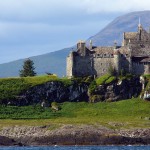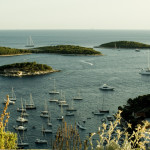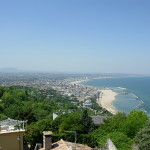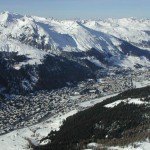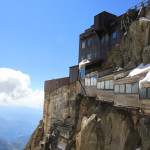Rugged Skellig Michael – a historic island in Ireland
The Emerald Isle of Ireland is known for its rolling green fields, lively music, and friendly people. The country has a long and colorful history, including the ancient Celts and the high kings of Ireland. In early Christian times, there were numerous abbeys and monasteries. One very special group of monks left their mark on the craggy island of Skellig Michael – a World Heritage Site today, and an evocative place to visit.
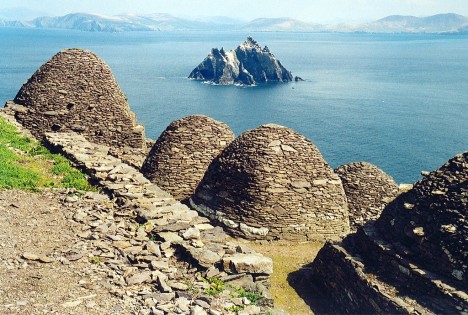
Skellig Michael, Ireland by Arian Zwegers
The dramatic Skellig Islands
About 12 miles off the coast of southwest Ireland, the jagged Skellig Islands rise steeply from the sea. These two rocky, uninhabited islands are both famous, for different reasons.
Little Skellig, the smaller of the two islands, is a bird sanctuary. This lonely windswept rock is home to the second largest colony of gannets in the world, with 27,000 pairs of these seabirds nesting on the island. Gannets abound here any time of year, along with many other types of birds. If you’re here between April and August, you’ll also find puffins with their cute, colorful bills.
Skellig Michael is the larger of the islands, and it’s a World Heritage Site due to the remarkable archaeological remains here. This rocky crag, isolated from the rest of Ireland by miles of often stormy sea, was home to a group of monks many centuries ago. It’s hard to imagine a more desolate and unforgiving place than this rock where they chose to build their monastery.
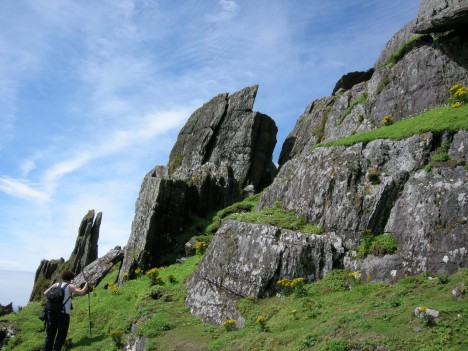
Hiking Skellig Michael island, Ireland by IrishFireside
The monastery at Skellig Michael
About 1,400 years ago, a small group of monks decided to leave the mainland for a difficult life of solitude on the island of Skellig Michael. The exact date of founding is not known, but legend has it that the monastery here was founded by St. Fionan in the 6th century. Around the year 950, the site was dedicated to St. Michael, leading to the island’s name today.
It was a harsh, spartan existence here for the small group of monks. They built high on the island, about 600 feet from sea level, and constructed flights of steep, stone steps leading from the water’s edge up to the area where they lived. It must have been a back-breaking task. The monks lived and worked in small stone huts that would have been dark and cold on long Irish winter nights, when stormy seas lashed the rock where their settlement perched. They eked out a living by farming a tiny plot of land and gathering the eggs of sea birds.
The tenacious monks maintained their settlement on the island for over 500 years, but eventually abandoned it in the 12th or 13th century, and returned to the mainland.
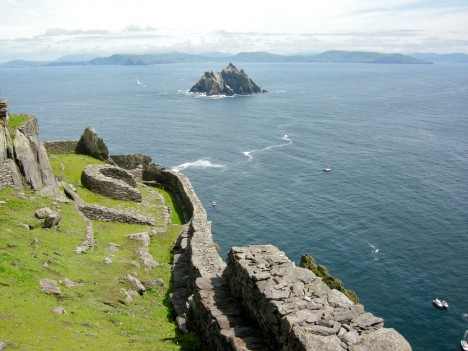
Little Skellig from Skellig Michael, Ireland by IrishFireside
Visiting Skellig Michael today
Skellig Michael is an amazing place, and can easily be a highlight of your trip to Ireland. It’s well worth a visit, though seeing the monastic ruins involves a boat ride to the island, followed by a rigorous climb up 618 steps to reach the remains of the settlement. If you’re up for a climb, it’s a memorable adventure.
Your boat will go by Little Skellig, where you can see and hear the immense flocks of birds, and land you at the base of Skellig Michael. Then it’s time for the climb. As you climb, think about how hard it must have been for the first people here, when they had to begin by building the steps and the stone huts at the top, with little shelter or comfort for themselves.
When you reach the top, you’ll see the well-preserved site, protected from vandals over the centuries by its isolation. This early Christian site has a church, oratories, beehive huts, a graveyard, and many crosses. The buildings are made of stacked stones, and have survived remarkably well given their age. You can walk around the site, take in the views, and enter some of the buildings.
It’s quite a feeling to be here high atop the rugged island, imagining what it would have been like to live here. Hopefully the day of your visit will be sunny and warm, and you can relax at your hotel afterwards. Things were different for the monks, who had a difficult existence here with many hardships.
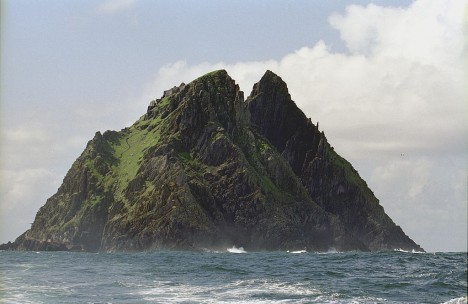
Another view of Skellig Michael island, Ireland by Jerzy Strzelecki
Practical details for your trip
Skellig Michael is about 12 miles off the southwest tip of Ireland. You can reach the island by boat from the town of Portmagee. The boats run between April and September, but there are many days when the weather or sea state prevent the tour boats from landing at the island. Your best chance is to plan a few days in the area, so that if one day doesn’t work, you can try again the next day. There are no facilities on the island, so bring water and something to eat.
You can also visit the Skellig Experience Centre in Valentia, very near to Portmagee. Whether you make it out to the island or not, this visitor center will give you a better understanding of what life was like for the dedicated monks that made their life on the inhospitable island of Skellig Michael.
Deanna Keahey is a lifelong lover of adventure. After running an international travel company for years, she now writes about travel tips and ideas. Most recently she’s published a timeshare book called Winning the Timeshare Game: Buying the Bargains. You can find her on Facebook, Twitter or Google+.






